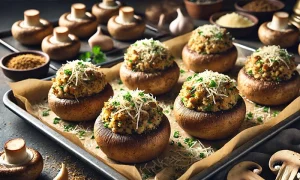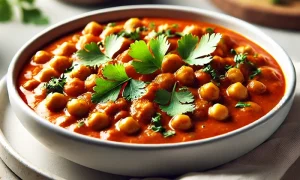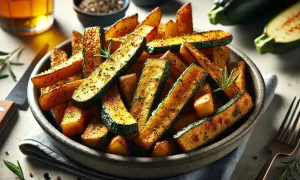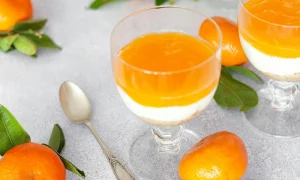Vegan Meal Prep Tips: Plant-Based Planning

Embracing a vegan diet doesn’t mean you must sacrifice variety or taste. On the contrary, it opens up a world of colorful and nutritious possibilities that can fit into a busy lifestyle with the right approach to meal prep. By planning your meals in advance, you can maintain a plant-based diet that’s overflowing with flavorful, nutrient-dense foods while saving time and avoiding the dreaded question of what to make for dinner.
Meal prepping as a vegan involves more than just packaging individual portions; it’s about creating a harmonious menu that aligns with your nutritional needs and personal tastes. It starts with understanding the basics of a balanced vegan plate, followed by smart shopping strategies to ensure you have all the essential ingredients at hand. Learning a few cooking techniques can also go a long way in preserving the taste and nutritional value of your meals. With a bit of preparation, you’ll be able to enjoy varied vegan dishes that are as appetizing as they are healthful and convenient.
Key Takeaways
- Adopting vegan meal prep can streamline your diet and ensure nutritious, enjoyable meals.
- Strategic shopping and cooking skills are central to effective vegan meal prepping.
- Proper preservation and reheating methods enhance meal longevity without sacrificing quality.
Benefits of Vegan Meal Prepping
Vegan meal prepping can transform your weekly routine, offering health, economic, and environmental upsides. It’s about more than just eating vegetables; it’s a strategic approach to maintaining a nutritious and sustainable lifestyle.
Health Advantages
When you plan your meals, you ensure a balance of nutrient-rich foods. Your body receives a variety of plant-based proteins and vitamins, which are the cornerstones of a healthy, plant-based diet. Preparing your meals in advance means you’re more likely to avoid processed foods and choose whole, nutritious food packed with essential nutrients.
Time and Money Efficiency
Meal prepping saves time during the busy workweek. By dedicating a few hours to prepare your meals for the coming week, each day becomes less stressful and more efficient. This practice also helps to save money, as it reduces the likelihood of impromptu purchases and minimizes food waste by buying only what you need. Especially when meal prepping, veganism doesn’t have to be expensive.
Environmental Impact
Choosing plant-based ingredients tends to have a lower carbon footprint. By meal prepping, you contribute to reducing food waste, as planned portions and careful shopping lead to less spoilage. Additionally, with fewer trips to the store and reduced reliance on packaged goods, your environmental impact, production of plastic waste, and generation of greenhouse gasses from meal prepping is significantly reduced.
Fundamentals of Vegan Meal Prep
When embarking on vegan meal prep, it’s essential to have a firm understanding of the nutritional components necessary for a balanced diet, a well-thought-out plan for your meals, and a varied selection of ingredients that will keep your diet both interesting and healthful.
Understanding the Basics
Your foundation in vegan meal prep begins with recognizing the importance of balanced nutrition. This means ensuring that each meal contains a good source of protein, vitamins, and minerals that are sometimes more challenging to obtain in a vegan diet, such as B12, iron, and omega-3 fatty acids. Familiarize yourself with plant-based protein sources such as legumes, quinoa, and tofu as staples for your meals.
Planning Your Meal Prep
Planning is the cornerstone of effective meal prep. Start by drafting a meal schedule for the week and create a detailed grocery list to streamline your shopping. Use your list to buy a mix of fresh produce and pantry staples. This approach not only saves time and money but also ensures you have all necessary ingredients at hand. Remember to consider shelf life; buy a blend of perishable and long-lasting produce to minimize waste.
Selecting Diverse Ingredients
Variety is more than the spice of life; it’s key to a healthy vegan diet. Make sure to incorporate a colorful array of vegetables and fruits into your plant-based meals. This isn’t just visually appealing—it helps cover a wide spectrum of nutrients. Don’t forget to include a range of textures and flavors, from crunchy nuts and seeds to creamy avocados, to keep your meals exciting and satisfying.
Smart Shopping Strategies
When embarking on a vegan lifestyle, your approach to shopping is pivotal. Excellence in meal preparation begins with effective strategies to navigate the grocery store, ensuring you stick to your nutrition goals while optimizing your budget and time.
Creating a Planned Grocery List
Begin your grocery journey by crafting a detailed list. Your list should align with your weekly meal plan, ensuring you purchase exactly what’s necessary for the forthcoming days. Include a variety of fresh produce and pantry staples, categorizing them to simplify and expedite your shopping experience.
- Fruits: List specific fresh fruit items and their quantities.
- Vegetables: Itemize the fresh produce for meals and snacking.
- Grains: Quantify your whole grains like oats, rice, and quinoa.
- Proteins: Tofu, lentils, and beans—note preferred types and amounts.
- Others: Nutritional yeast, plant milks, and nuts should also make the list.
Avoiding Impulse Buys
Stick to your list to bypass the trap of impulse buys. Shop the perimeter of the store as it’s typically where the fresh items are stocked. The inner aisles often harbor processed foods which may tempt you to deviate. If you encounter a new product that interests you, take a moment to consider if it fits within your meal plan and nutrition objectives.
Another tip is to avoid going grocery shopping when you’re hungry. Often people make jokes about overspending when they shop on an empty stomach, but there is some truth to it! It’s easier to give into those impulses when they’re magnified by cravings.
Shopping for Freshness
Prioritize freshness to maximize the nutritional value of your vegan diet. Inspect fresh fruit and produce for ripeness and signs of spoilage to avoid waste. Inquire about delivery days to potentially shop on the days when fresh stock is available. Embrace seasonal shopping; seasonal groceries are often fresher and more affordable, enhancing both your meals and your savings.
Cooking Techniques and Tips
Mastering vegan meal prep is about understanding how to cook large quantities efficiently, store your meals safely, and utilize kitchen appliances for maximum benefit. Here’s how you can streamline your cooking process and make your vegan meal prep a breeze.
Batch Cooking and Storage Tips
- Batch cook your grains and legumes at the start of the week; they’re staples in a vegan diet and can be used in a variety of dishes.
- When cooking in bulk, ensure even chopping and cooking sizes for consistency.
- Utilize storage containers that are airtight to keep your food fresh.
- Let food cool before sealing and storing in the fridge or freezing for later use.
Making the Most of Kitchen Appliances
Leverage the power of a slow cooker or Instant Pot to prepare large quantities with minimal supervision. These appliances are excellent for stews, soups, and beans, which are at the heart of many vegan meals. Remember, the crockpot is ideal for deep flavors, while the Instant Pot can significantly speed up cooking time.
Cooking ‘Once, Eating Twice’ Strategies
When you cook, plan for leftovers. Recipes that are easy to double or triple mean you can eat one portion now and store the rest. Learn the art of reheating without loss of texture or flavor—often, an oven or stove top is preferable to a microwave to retain the quality of the meal. Embrace recipes that transform easily, like turning last night’s chili into a filling for tacos or a baked potato topping.
Vegan Meal Types and Preparation
Planning your vegan meals can be both enjoyable and straightforward. With a focus on wholesome ingredients and simple techniques, you can create delightful dishes that are both nutritious and satisfying.
Quick and Simple Breakfast Ideas
Overnight Oats: Take rolled oats, your choice of plant-based milk, and any desired toppings like fresh fruit or nuts, and mix them in a jar. Let them sit overnight in the refrigerator, and you’ll have a creamy and filling breakfast ready to go in the morning.
Chia Pudding: Combine chia seeds with non-dairy milk and a touch of sweetener, if you like. Set the mixture aside to thicken for a few hours or overnight. This pudding can be topped with berries or sliced banana for an added flavor boost.
Steel Cut Oats: Start your day with a warm bowl of steel-cut oats. Cook them with water or plant milk and add a dollop of your favorite nut butter or some maple syrup for a naturally sweet touch.
Nutritious Lunches for Energy
Chickpea Salad: A quick and robust salad can be made by tossing chickpeas with diced vegetables, a squeeze of lemon, and your favorite herbs. This lunch is packed with fiber and protein, keeping you full throughout the afternoon.
Tofu Scramble: For a twist on a lunchtime classic, scramble some firm tofu with turmeric, nutritional yeast, and your preferred veggies. Serve it in a wrap or with a side of whole-grain toast for a complete meal.
Diverse Dinners for a Satisfying End to the Day
Vegan Pasta Bake: Layer your favorite pasta, rich tomato sauce, seasonal vegetables, and cashew cheese in a baking dish. Bake until bubbly for a comforting and hearty dinner.
Mediterranean Vegan Meal Prep Bowls: Assemble bowls with quinoa or couscous, mixed greens, roasted chickpeas, sliced cucumber, cherry tomatoes, and a drizzle of tahini dressing. This dinner is as nutritious as it is colorful.
Building a Vegan Meal Prep Menu
Planning your vegan meal prep menu with a mix of stability and excitement is key. You’ll need a variety of nutrient-dense foods and a game plan for using leftovers. Here’s how to create that balance.
Writing a Meal Prep-Focused Menu
When planning your weekly menu, prioritize recipes that have overlapping ingredients to minimize waste and simplify shopping. Start with staple recipes like a hearty vegan chili that are both filling and re-heatable. Additionally, consider meals that balance macronutrients—such as a quinoa salad that delivers a complete protein alongside a rainbow of vegetables.
Incorporating Global Flavors
To keep your meal prep exciting, infuse your menu with global flavors. You can take inspiration from Mediterranean cuisine or the vibrant spices of Indian dishes. For instance, crafting a Tofu Tikka Masala can give a fresh twist to your weekly rotation and introduce new herbs and spices to your diet. Finding authentic vegan recipes that celebrate these flavors will ensure your meals are both culturally respectful and delicious.
- Mediterranean: Falafel with Tzatziki (using dairy-free yogurt)
- Indian: Tofu Tikka Masala with Basmati Rice
- Mexican: Black Bean and Corn Tacos with Avocado
Utilizing Leftovers and Making Substitutions
Leftovers are the backbone of efficient meal prep. Get creative and transform last night’s chili into a taco filling for tonight’s dinner. Understand also that not every ingredient is set in stone; practice making substitutions based on what you have. No quinoa? Use brown rice. Out of black beans? Try lentils. This approach maximizes your food, reduces waste, and keeps your vegan meal prep recipes dynamic.
- Chili -> Tacos, Stuffed Peppers, Chili ‘Mac’
- Quinoa Salad -> Stuffed Pitas, Salad Wraps
- Roasted Veggies -> Buddha Bowls, Pasta Toss
Remember, your vegan meal prep should offer a variety of nutrients and flavors to keep each meal exciting and beneficial to your health. With these strategies, you’ll craft a menu that is both enjoyable and supportive of your vegan lifestyle.
Composing the Perfect Vegan Plate
Creating your vegan plate involves more than just choosing plant-based foods; it’s about balancing nutrients for energy and health while making meals exciting with diverse flavors and colors.
Balancing Macronutrients
Proteins: To ensure your plate has a high-protein component, incorporate a variety of legumes like beans, lentils, or chickpeas. These can be the foundation of your dish for sustained energy. For a rich texture and added protein, consider adding tofu or tempeh.
- Legumes: Beans, lentils, chickpeas
- Soy products: Tofu, tempeh
Whole grains: A perfect vegan plate includes whole grains as a source of complex carbohydrates and fiber. Quinoa, brown rice, or bulgur can offer a satisfying base that complements your protein choices.
- Grains: Quinoa, brown rice, bulgur
Enhancing With Color and Flavor
Colorful Veggies: Add vibrancy and essential nutrients to your plate with a variety of colorful vegetables. Aim for at least three different colors to maximize the variety of vitamins and minerals. Bell peppers, carrots, and leafy greens are all excellent choices.
Peanut Sauce: To elevate taste and add a creamy texture without dairy, drizzle your dish with a savory peanut sauce. Not only does it enhance the flavor, but it also contributes additional proteins and healthy fats to your meal.
By focusing on these elements, your vegan meal prep will be nutritionally balanced, aesthetically pleasing, and full of flavor.
Meal Delivery and On-the-Go Options
Embracing a vegan lifestyle doesn’t mean you’re confined to your kitchen. Today’s services and products deliver both convenience and nutrition, making it easier for you to maintain a plant-based diet amid a busy schedule.
Vegan Meal Delivery Services
Vegan meal delivery services offer a range of options tailored to your dietary preferences and schedule requirements. These services can provide you with weekly meal kits with pre-measured ingredients and recipes or fully prepared meals that only require heating.
Packing Meals for Work or School
When you’re managing a hectic day, packing meals can be a game-changer. Your meal prep should focus on portability and balance:
- Grains: Quinoa or brown rice offer a sturdy base that holds up well.
- Proteins: Beans, lentils, or tofu are easy to pack and keep you full.
- Veggies: Opt for a mix of raw and cooked for variety.
By planning ahead and utilizing portable containers, you’ll ensure that you have satisfying vegan meals ready to go at a moment’s notice.
Advanced Meal Prep Strategies
When adopting a vegan meal prep routine, it’s crucial to ensure that your meals are not only nutritious and aligned with your dietary preferences, but also varied and organized to keep your diet interesting and manageable.
Adapting Vegan Meal Prep for Dietary Restrictions
For those of you with specific dietary restrictions, such as dairy-free or gluten-free needs, planning is paramount. Start by sourcing a collection of reliable gluten-free recipes that provide a broad spectrum of nutrients, and use ingredient substitutes like nut-based ‘milks’ for a dairy-free diet. It’s important to label your prepped meals clearly, not only for organizational purposes but to prevent any mix-ups that could lead to dietary mishaps.
Frequently Asked Questions
How can I ensure a balanced nutrient intake when preparing vegan meals for the week?
To ensure a balanced nutrient intake, focus on incorporating a variety of whole grains, legumes, nuts, seeds, fruits, and vegetables into your meals. Each group provides different essential nutrients vital for your health.
What are some high protein ingredients to include in vegan meal prep?
High protein ingredients for vegan meal prep include lentils, chickpeas, tofu, tempeh, quinoa, and various nuts and seeds.
What are the most cost-effective foods to focus on for vegan meal prep on a budget?
Cost-effective foods for vegan meal prep include beans, rice, pasta, seasonal vegetables, and bulk purchases of nuts and seeds. Buying in bulk and choosing local, in-season produce can help save money.
Can you suggest some vegan meal prep strategies for weight loss?
For weight loss, consider vegan meal prep with a focus on high-fiber foods such as vegetables and whole grains, controlling portion sizes, and reducing high-caloric dense foods like oils and processed snacks.
What are the best practices for storing vegan meal prep to maintain freshness?
To maintain freshness, store prepared meals in airtight containers and keep them in the refrigerator or freezer. Separate dishes into single servings and consider labeling with dates to track freshness.
How can I diversify my vegan meal prep to keep my diet interesting?
To diversify your diet, experiment with different cuisines, use a variety of spices and seasonings, and try new recipes regularly. Rotate your choice of grains, proteins, and vegetables to create diverse and flavorful meals.











